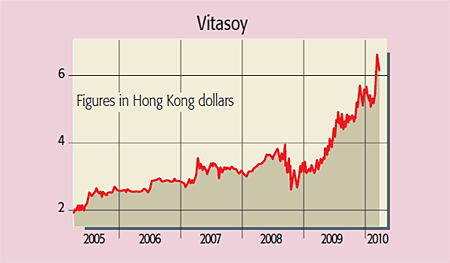
Well-constructed Asia funds aren’t easy to find. Aberdeen Asset Management seems to try harder than most providers. Its New India Investment Trust (LSE: NII) has around 12% in healthcare, 9% in consumer staples and 8% in consumer discretionary. It also leaves out some of the firms with the worst governance. If you’re looking for a China fund, you could consider the US-listed China Fund (NYSE: CHN), managed by Martin Currie. This is around 22% healthcare, 16% consumer services and 10% consumer goods.
All the large-cap ETFs are unattractive, but have a look at niche products, such as the Claymore/Alphashares China Small Cap (US: HAO), which has 13% in consumer discretionary, 7% in consumer staples, and 4% in healthcare. Small caps may be the best way to go for a regional tracker as well. The iShares Far East ex-Japan (LSE: IFFF) has 8% in consumer discretionary and 4% in consumer staples; by going for the Far East ex Japan Small Cap (LSE: ISFE) you get that up to 16% and 5%, plus 5% in healthcare as well. You also lose the exposure to Chinese state-owned banks. (Note that this index has no exposure to India.)
Build your own portfolio of Asian firms
What about building your own portfolio? Don’t overlook UK firms geared to emerging markets. Standard Chartered (LSE: STAN) is a high-quality bank covering most emerging markets, not just Asia. And insurer Prudential (LSE: PRU) will have more business in Asia following the AIG deal than in the UK. The market hates this deal because of the enormous rights issue it requires; to me it makes excellent sense, although there are execution risks.
India is closed to foreign retail investors, but a handful of good large caps are listed in America. HDFC Bank (NYSE: HDB) and ICICI (NYSE: IBN) are the best prospects in financials. Tech firm Infosys (NYSE: INFY) is probably the best of the emerging market multinationals. Generic pharma firm Dr Reddy’s Laboratories (NYSE: RDY) is a healthcare play, albeit a global one rather than purely geared to India. It’s hard to find attractive large Chinese stocks, but you could consider Hong Kong-listed Tsingtao Brewery (HK: 0168), or supermarket chain Wumart (HK: 8277).
Elsewhere, Singapore-listed Dairy Farm International (SG: DFI) is a consumer staples retailer operating across most of the region. Asia Pacific Breweries (SG: APB) and Thai Beverage (SG: THBEV) are drinks firms (the latter is closely controlled and relatively illiquid). In telecoms, Telekomunikasi Indonesia (NYSE: TLK) looks a good growth bet, while Taiwan’s Chunghwa Telecom is a solid income play (NYSE: CHT).
But most well-known stocks such as these trade on high valuations by now. They should still deliver respectable long-term returns, but bigger profits are likely to come from mid-to-small-cap Asian stocks, which are still underowned. Take food and beverage firm Vitasoy (HK: 0345), an established family firm with a strong position in the Hong Kong soft drinks market. Sales in mainland China, which accounts for a quarter of the business, are growing at around 50% a year. Despite a 90% run-up in price over the last year, it still looks decent value on a p/e of 22.